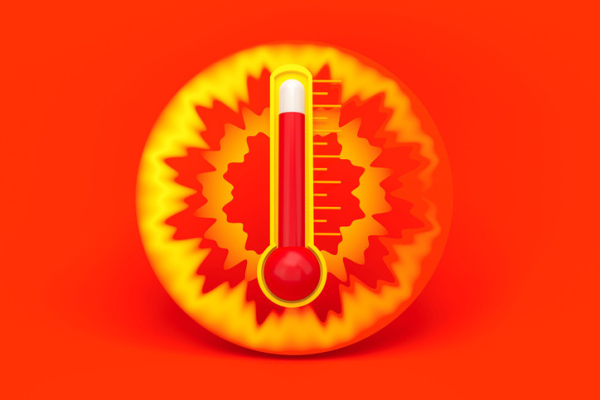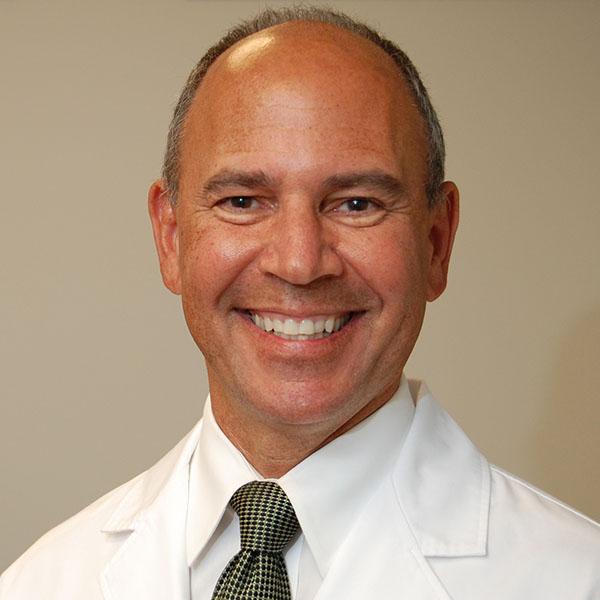
Here’s a new fact about spring, summer, fall, and sometimes even winter, now that climate change has blurred seasonal boundaries: sizzling heat may be on the way, or currently blanketing your community.
High temperatures stress the body, leading to thousands of heat-related illnesses and deaths every year in the US. Creating a personal heat plan can help you stay safe when the heat index soars.
Caleb Dresser, MD, MPH, is the health care solutions lead for C-CHANGE, the Center for Climate Health and the Global Environment at the Harvard T.H. Chan School of Public Health, and an emergency medicine doctor at Harvard-affiliated Beth Israel Deaconess Medical Center. Below we interview him about who, how, and why heat harms. Then we’ll help you create your personal heat safety plan.
Interview edited for clarity
Who is especially vulnerable during hot weather?
High temperatures can affect anyone. But some people — children, outdoor workers, people who are pregnant or have health problems or disabilities, and older people — are more likely to experience harm when temperatures rise. For example:
- Young children, especially babies, have less physical capacity to deal with very high temperatures.
- People working outdoors may not have access to shade and could be performing physically intensive labor. They need adequate hydration, adequate breaks, and access to a cool space during break time, as OSHA guidelines spell out.
- People with chronic medical conditions, such as kidney disease or heart disease, may have difficulty adapting physiologically to hot weather, or may be more susceptible to its health impacts.
- And some people living with disabilities or certain neurological conditions may have difficulty with thermoregulation — that is, controlling the temperature of their bodies — or may not be able to take actions that keep them safe, such as taking off layers or moving to a cool area.
Which weather patterns create dangerous levels of heat?
Dangerous heat is the result of both high temperatures and high humidity, which interfere with our ability to cool off by sweating. In dry areas, extremely hot temperatures can be dangerous on their own.
Danger zones vary across the United States and around the world. But hospital use and deaths rise once we get above threshold temperatures. The threshold varies in different places depending on whether bodies, cultures, and architecture are adapted to heat.
For example, here in New England, where some people (particularly those of limited means) may not have access to air conditioning, we see increases in healthcare use and deaths at a lower temperature than in the American South, where people and organizations may be more used to dealing with hot weather.
When does hot weather become dangerous to our health?
Risk goes up the longer hot weather sticks around.
One hot day can put some people at risk. A stretch of several hot days in a row during a heat wave is particularly dangerous because it can overwhelm people’s ability to adapt. Eventually people run out of physiological reserves, leading to greater health harms and greater need for medical care.
Surprisingly, spring and early summer are particularly dangerous times because people and organizations aren’t as prepared for hot weather.
How to create your personal heat safety plan
Five key points to help you create a personal heat plan are below. Americares offers further information through heat tip sheets developed with the Harvard C-CHANGE team that are tailored to people in different health circumstances.
Planning is important because intense heat is occurring more often: a Climate Central analysis found 21 additional risky heat days, on average, for 232 out of 249 locations between 1970 and 2022.
- Stay ahead of hot weather. Check apps, websites, TV, or radio for updates on weather today and in coming days. If local weather alerts are available by phone or text, sign up.
- Have a cooling plan. When temperatures soar, you need to spend as much time as possible in cool spaces. Plan options if your home is likely to be too hot and unsafe to stay in. You may be able to stay with a neighbor or family member who has air conditioning until a heat wave passes. Many cities and towns have neighborhood splash pads for children, and open cooling centers or air-conditioned libraries, public buildings, or community centers to everyone — sometimes even overnight. Spending time in air-conditioned businesses or malls, or in a shady green space like a park, may help too.
- Sip plenty of fluids. Water is the best choice. Skip sugary drinks and avoid caffeine or alcohol.
- Use fans correctly. Fans help if surrounding air is relatively cool. If air temperatures are very high, it’s important to dampen your clothes or skin to help keep your body from overheating, and move to a cooler location, if possible.
- Know your personal risks and the signs of heat-related illness. If you have health problems or disabilities, or take certain medicines such as diuretics, talk to your doctor about the best ways for you to cope with heat. It’s also essential to know the signs of heat-related illnesses, which range from heat rash and sunburn to heat cramps, heat exhaustion, and heat stroke. This chart from the Centers for Disease Control and Prevention describes the signs to look for and what you can do, particularly when heat becomes an emergency.
About the Author

Francesca Coltrera, Editor, Harvard Health Blog
Francesca Coltrera is editor of the Harvard Health Blog, and a senior content writer and editor for Harvard Health Publishing. She is an award-winning medical writer and co-author of Living Through Breast Cancer and The Breast … See Full Bio View all posts by Francesca Coltrera
About the Reviewer

Howard E. LeWine, MD, Chief Medical Editor, Harvard Health Publishing
Dr. Howard LeWine is a practicing internist at Brigham and Women’s Hospital in Boston, Chief Medical Editor at Harvard Health Publishing, and editor in chief of Harvard Men’s Health Watch. See Full Bio View all posts by Howard E. LeWine, MD



